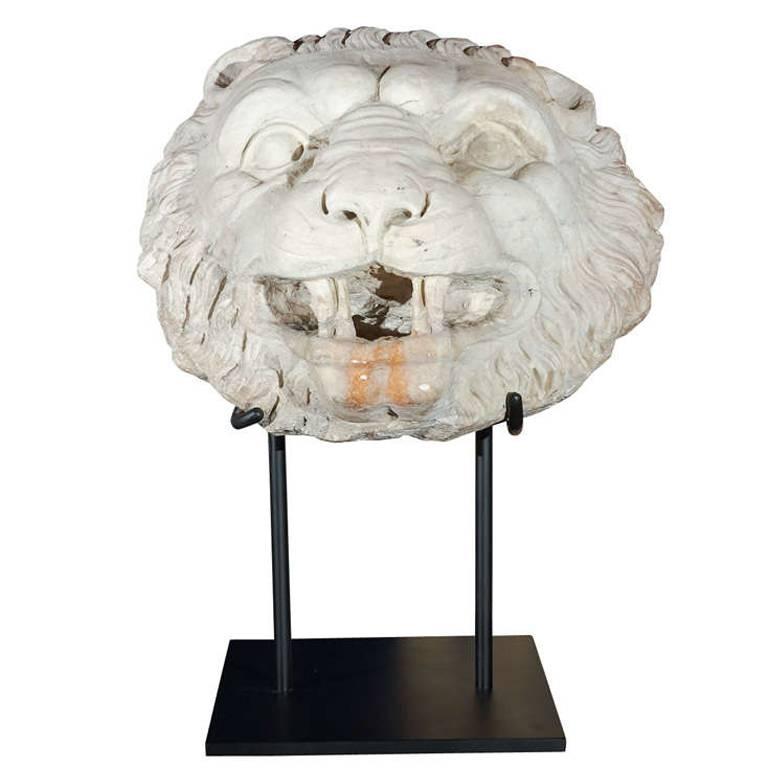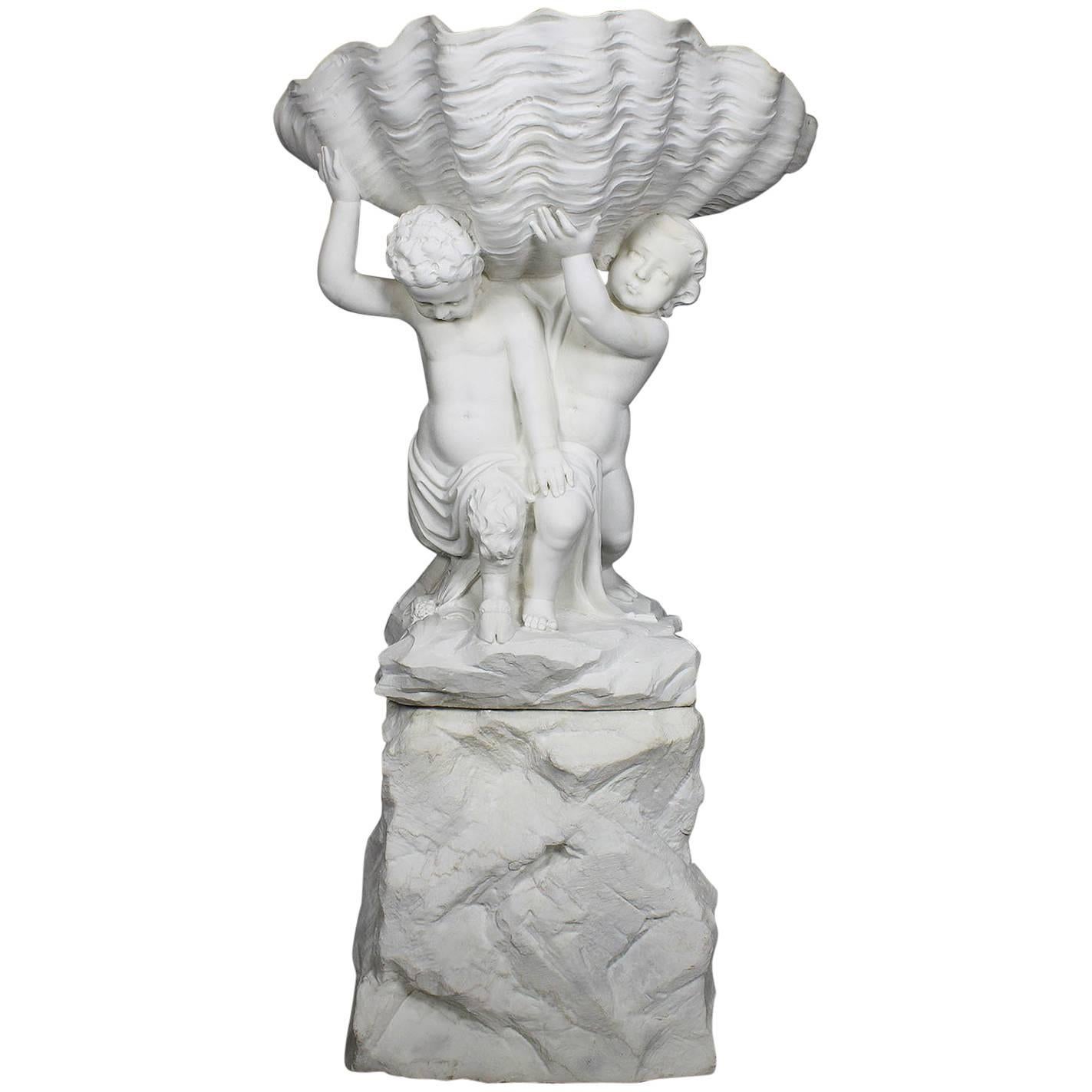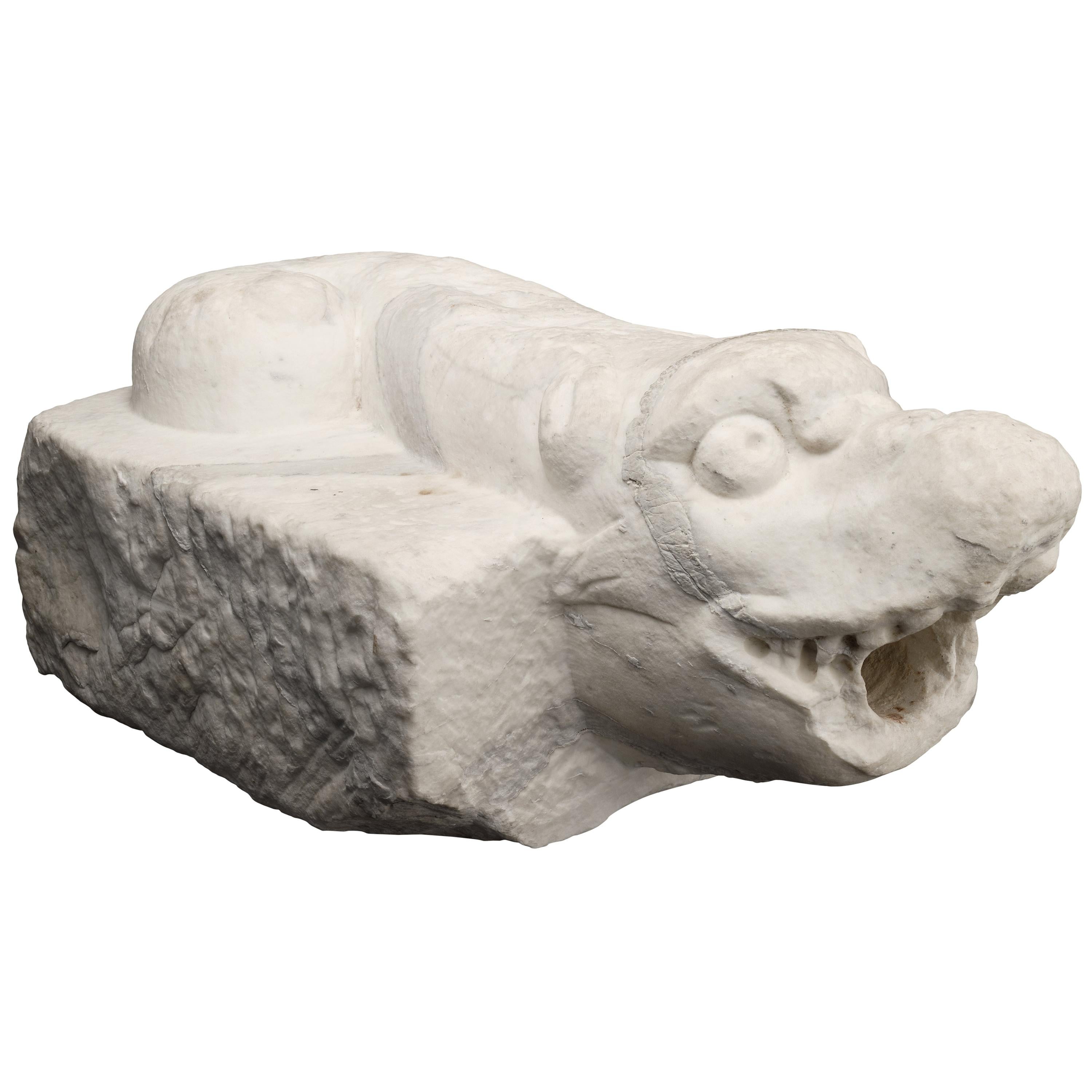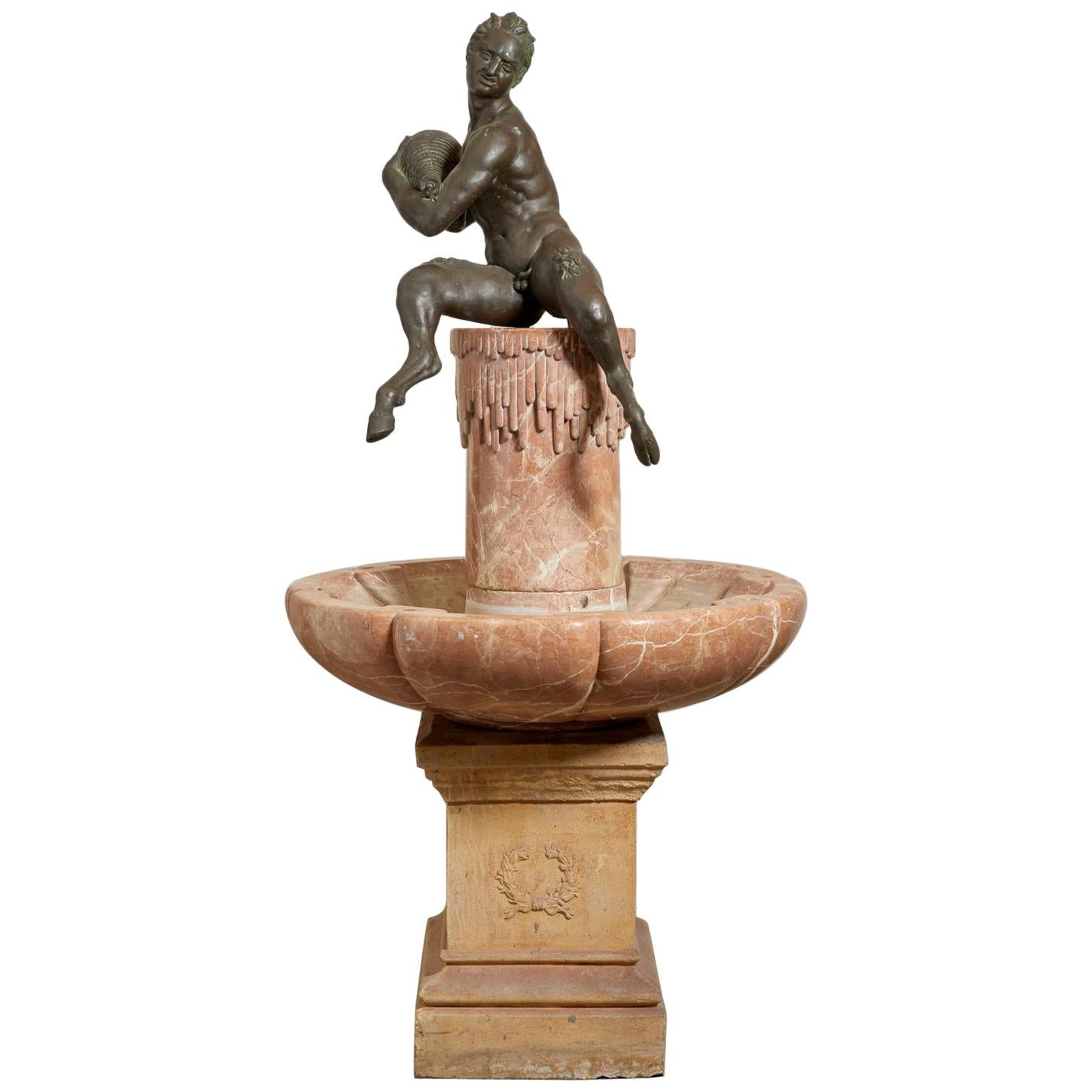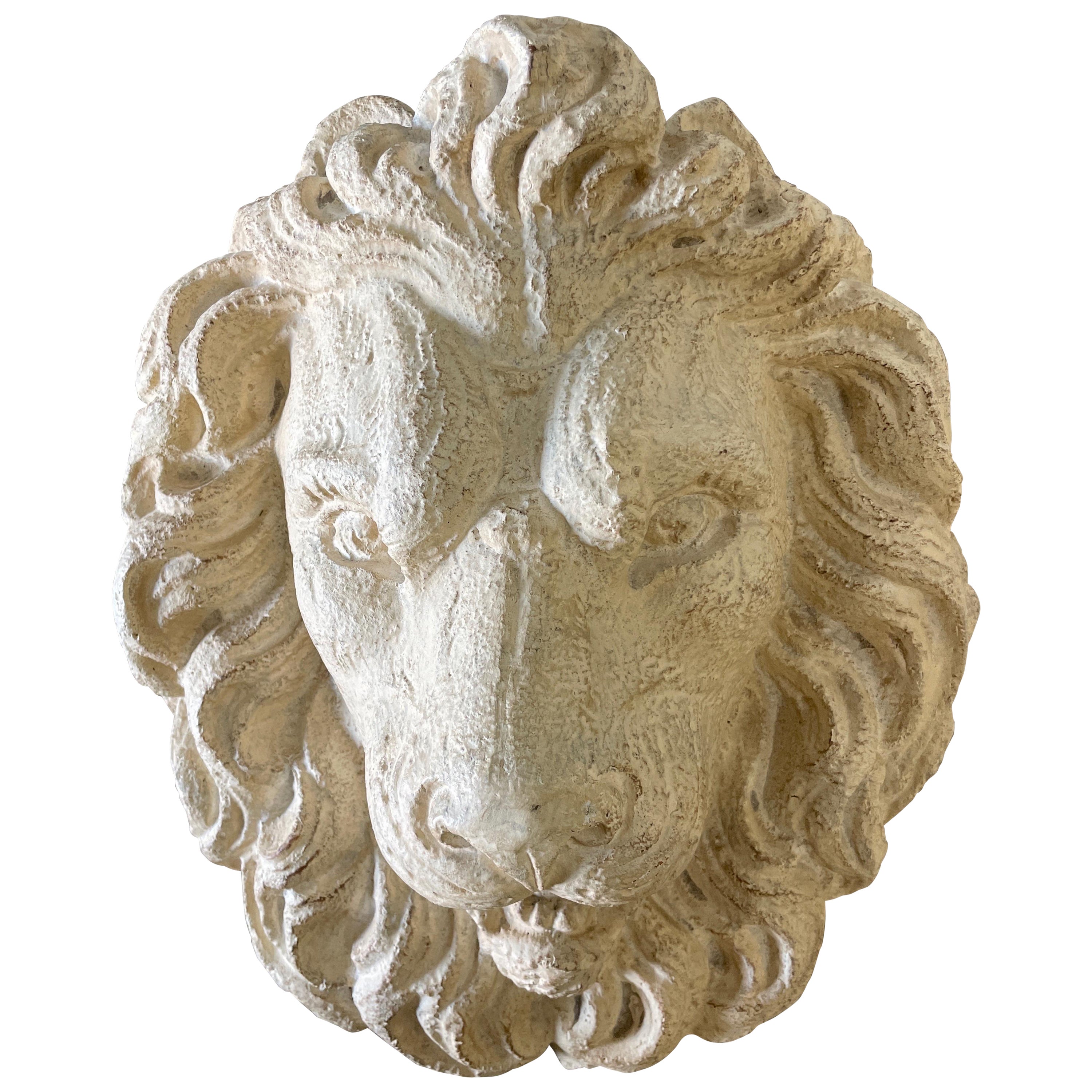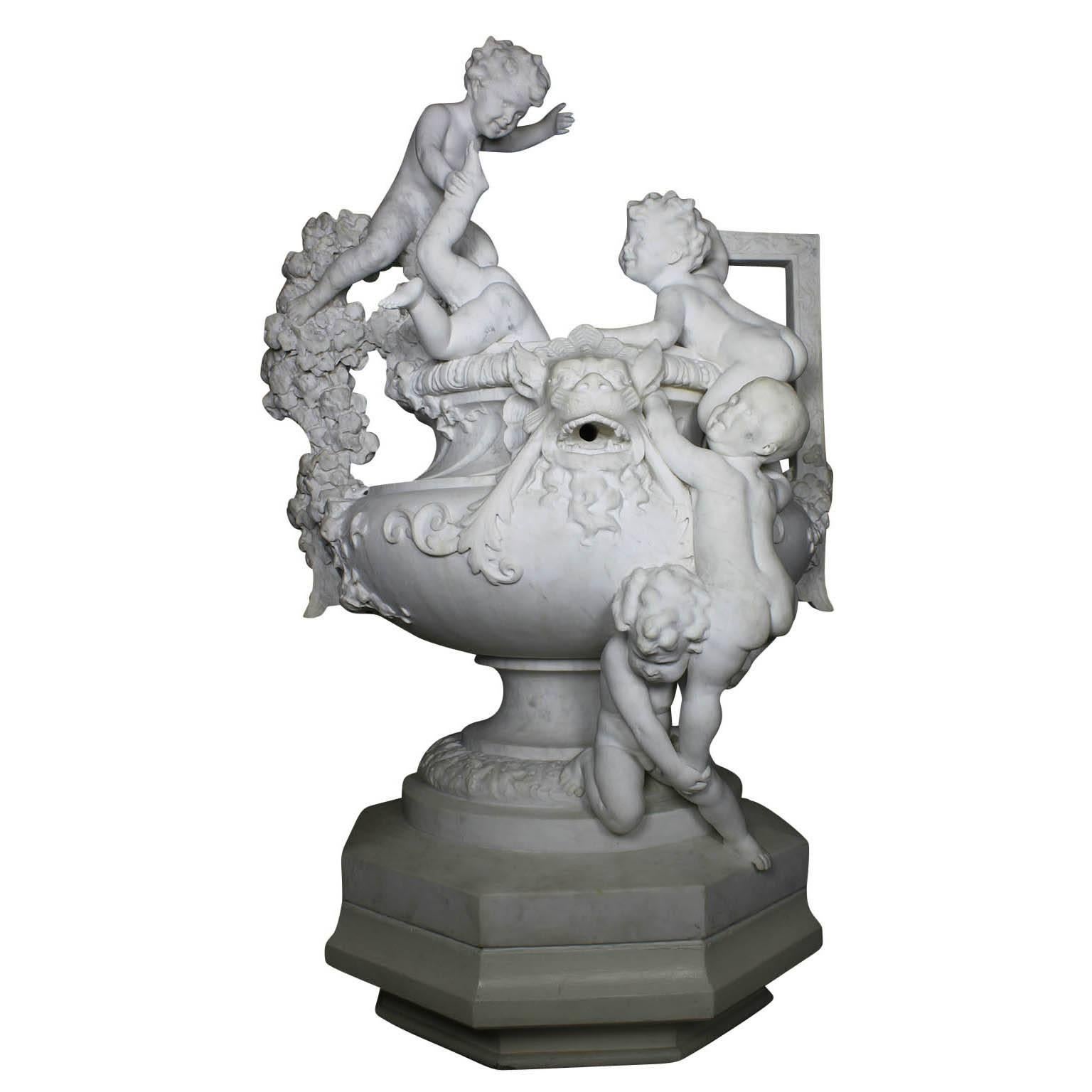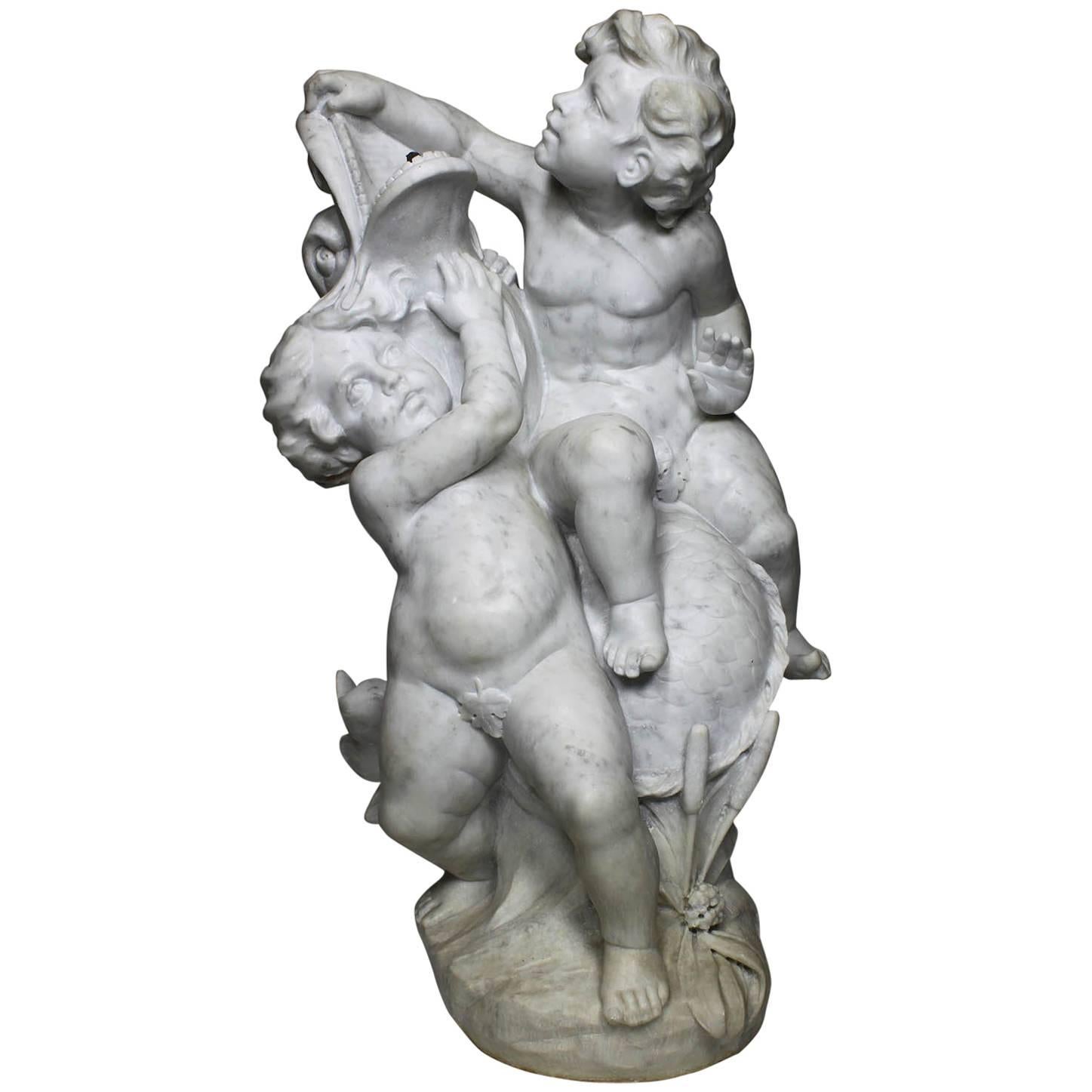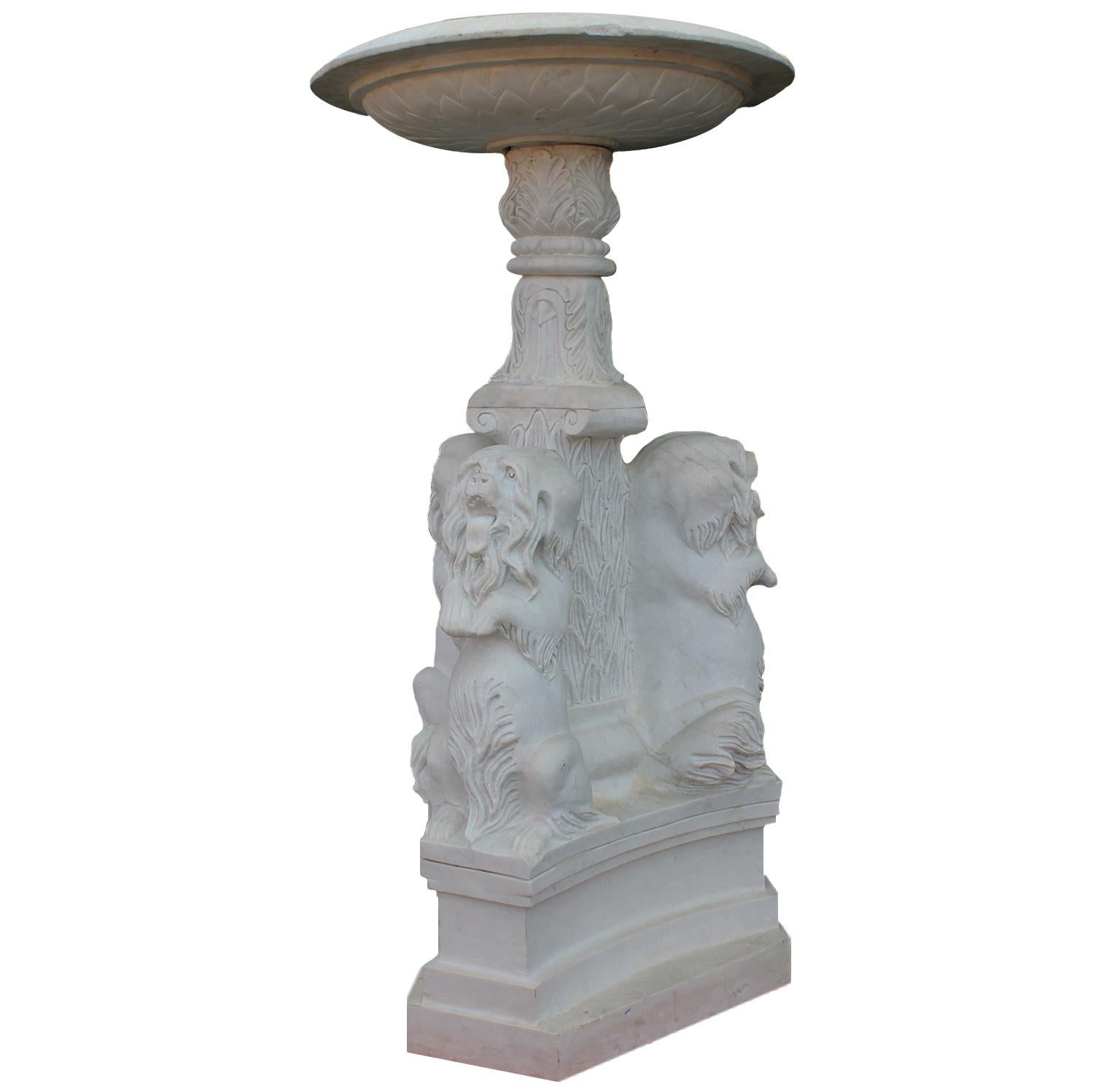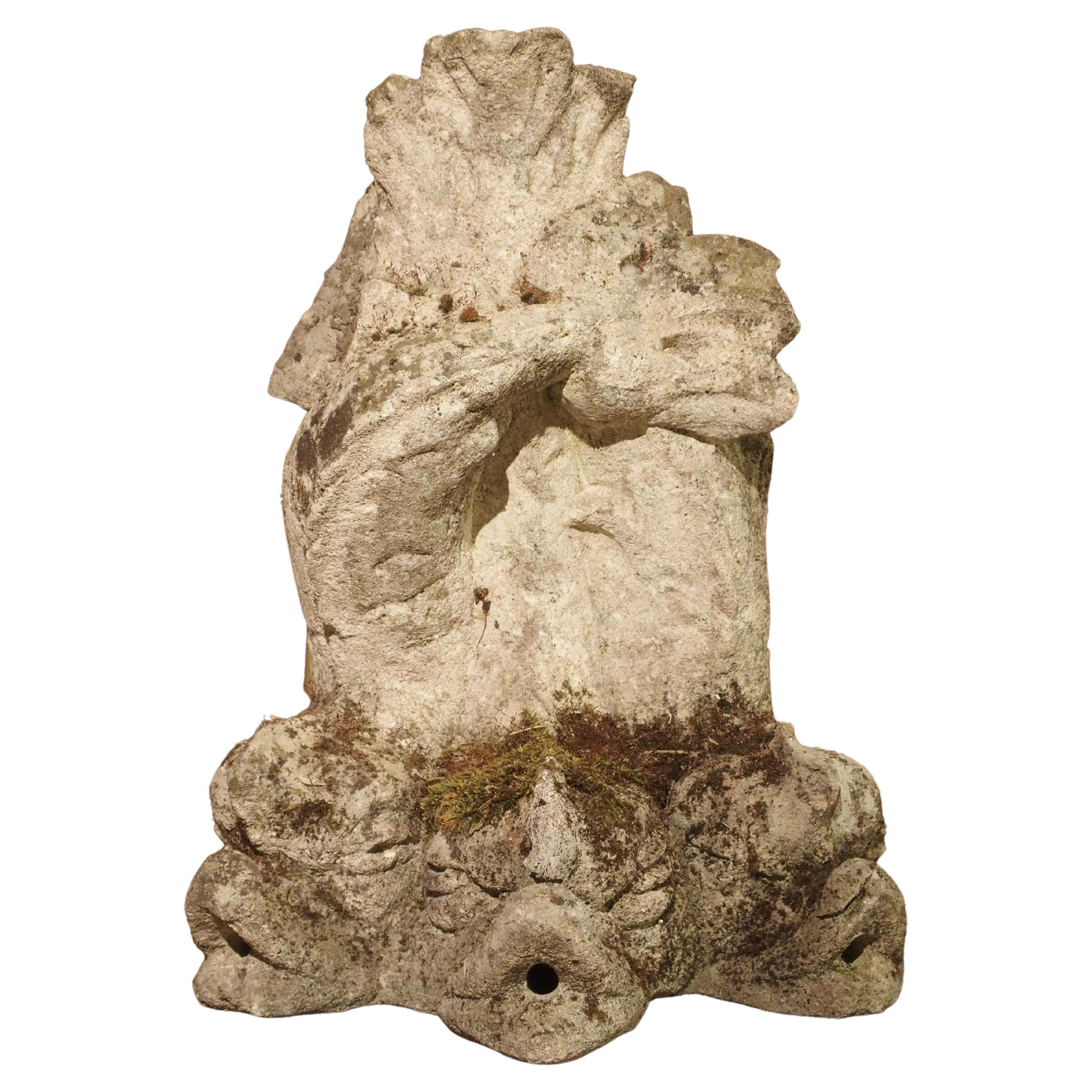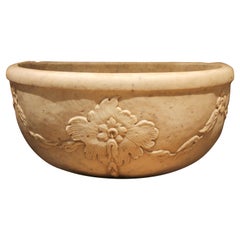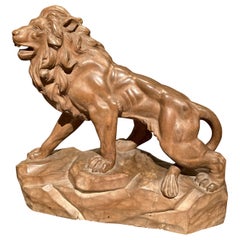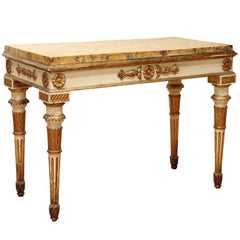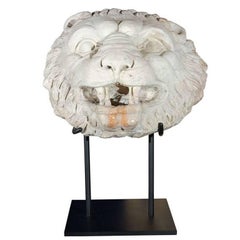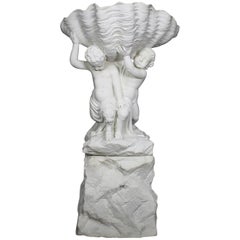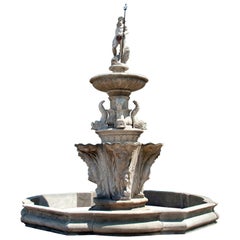
Antique Italian Yellow Siena Marble Lion's head Fountain
View Similar Items
Want more images or videos?
Request additional images or videos from the seller
1 of 9
Antique Italian Yellow Siena Marble Lion's head Fountain
About the Item
- Dimensions:Height: 7.09 in (18 cm)Width: 21.66 in (55 cm)Depth: 9.06 in (23 cm)
- Style:Baroque (In the Style Of)
- Materials and Techniques:
- Place of Origin:
- Period:
- Date of Manufacture:18th Century
- Condition:Wear consistent with age and use.
- Seller Location:Firenze, IT
- Reference Number:1stDibs: LU95036531153
About the Seller
5.0
Vetted Seller
These experienced sellers undergo a comprehensive evaluation by our team of in-house experts.
Established in 1950
1stDibs seller since 2012
109 sales on 1stDibs
Typical response time: 2 hours
More From This SellerView All
- Italian 17th Century Solid Hand Carved White Carrara Marble Fountain or BasinLocated in Firenze, ITEntirely hand carved in a solid block of precious white Carrara marble, this antique Italian late 17th century-early 18th century fountain or basin is sculpted with elegant floral and foliate patterns typical of Baroque period of Genoese area. This generously sized half moon basin features a wonderful hand sculpted floral carvings on front, drawing the eye around its satisfyingly smooth arc and its charismatic form, while the back is raw, the ancient hand chisels can still be seen. Even the original iron pins which probably supported a back splash are still visible. It takes a high level of skill to carve such a hard marble into a wonderful demi lune shape such as this. Different shades of white due to varied patina from age allows it to go with practically any color scheme. This antique marble sculptural and architectural piece was originally a garden element, it is now perfect for both indoor or outdoor use. Elevate your interior or your garden to a new level of elegance with this one of a kind piece suitable for both public spaces and private homes. Whether placed in the master bathroom or in a powder room as a wash sink...Category
Antique Late 17th Century Italian Baroque Fountains
MaterialsCarrara Marble
- Italian 19th Century Big Scale Hand Carved Table Top Wood Lion SculptureLocated in Firenze, ITThis 19th century big scale Italian animalier sculpure features a lion striding forward on a root-wood base, snarling with open mouth and expressive eyes enlivening its rippling mane with an extremely realistic sense of motion. The wooden statue, wonderful as a table top, is entirely hand carved in the round in a single block of solid olive wood, sign of high quality and sculptural artisanal mastery. An original whimsical and impressive centerpiece clearly sculpted by a true artist who carved the block of wood creating this figure of the proudest feline boasting a detailed study of the lion's anatomy.The features on the face, mane, muscles, tail and the paws are still distinctive and full of character as well as the beautifully carved stand. This sculpture boasts smooth surface and a warm patina developed over centuries and exudes wonderful quality and timelessness of the ancient world. The rich original patina brings further intrigue to its intricately carved details. This hand carved wooden lion statue is a great looking antique centrepiece...Category
Antique 19th Century Italian Rustic Animal Sculptures
MaterialsWood
- Louis XVI Italian White Lacquer and Giltwood Console Scagliola Siena Marble TopLocated in Firenze, ITThis spectacular antique Italian 18th Century original Louis XVI period console table is made of hand carved wood lacquered and gilded with gold leaves with a gorgeous scagliola faux Sienna marble top. This rare and refined Florentine console...Category
Antique 18th Century Italian Louis XVI Console Tables
MaterialsScagliola, Giltwood, Wood
- Art Nouveau Huge Vienna Hand Painted Terracotta Vase Orpheus with LionsBy Adolphe-Jean Lavergne, Friedrich GoldscheiderLocated in Firenze, ITThis Art Nouveau hand painted Viennese terracotta decorative piece is a large exhibition vase featuring an animalier and mythological theme by Adolphe-Jean Lavergne for Friedrich Gol...Category
Early 20th Century Austrian Art Nouveau Vases
MaterialsTerracotta
- Contemporary Rhino Trophy Head Bronze Wall Sculpture with Green Patina FinishBy Pablo SimunovicLocated in Firenze, ITThis contemporary bronze sculpture of rhinoceros head faithfully reproduces – in almost real size - one of the largest mammals in the world. Proud and mighty, this rhino trophy head ...Category
2010s Italian Organic Modern Animal Sculptures
MaterialsBronze
- Contemporary Ram's Head Bronze Sculpture Lost Wax Casting Technique Green PatinaBy Pablo SimunovicLocated in Firenze, ITThis contemporary solid bronze sculpture of a ram's head is inspired by the art of Ancient Rome and Ancient Greece with a reference to neoclassicism. The artist is able to attribute ...Category
2010s Italian Neoclassical Animal Sculptures
MaterialsBronze
You May Also Like
- 17th Century, Carrera Marble Lion Fountain HeadLocated in Newport Beach, CAStunning, solid white, Carrara marble lions head from a fountain in Florence featuring a flowing main and a fabulous patina. Mounted on a custom, iron base. The piece hails from the ...Category
Antique Early 1600s Italian Sculptures
MaterialsMarble
- Italian 19th Century Carved Carrara Marble Figural Fountain Jardinière PlanterBy Giovanni Battista LombardiLocated in Los Angeles, CAA very fine Italian 19th century carved Carrara marble figural fountain "Jardinière" modelled as a standing Putto and a Satyr supporting a sea-sh...Category
Antique 19th Century Italian Baroque Figurative Sculptures
MaterialsCarrara Marble
$29,850 Sale Price33% Off - 19th Century Large Circular Garden Fountain Neptune, Italian Limestone FountainLocated in West Palm Beach, FLMonumental antique Italian three-tiered garden fountain. Four Cariatidi surround the center base raising the water which spells from the waved shells. The second tier is supported by...Category
Antique Early 19th Century Italian Baroque Fountains
MaterialsLimestone
- Italian Ancient Marble Sculpture Fountain, Late 16th CenturyLocated in Milano, ITSea monster Carrara marble mouth fountain Italy, late 16th century It measures 13.8 x 31.5 x 18.9 in (35 x 80 x 48 cm) State of conservation: some small evident gaps and widespread signs of wear due to outdoor exposure. The gray marks crossing it do not come from restoration, but are rather the natural veins of the marble. This work has some morphological characteristics typically associated with the iconography of the sea monster: an elongated muzzle, sharp teeth, protruding eyes, elongated ears, and a coiled serpent's tail. An in-depth series of studies on artistic depictions of the sea monster attempted to verify how this symbol evolved in antiquity in the European and Mediterranean contexts and how it gradually changed its image and function over time. The iconography itself is mutable and imaginative and its history is rich with cultural and artistic exchange, as well as the overlapping of ideas. This occurred so much that it is difficult to accurately pinpoint the "types" that satisfactorily represent its various developments. However, we can try to summarize the main figures, starting from the biblical Leviathan and the marine creature that swallowed Jonah (in the Christian version, this figure was to become a whale or a "big fish", the “ketos mega”, translation of the Hebrew “dag gadol”). Other specimens ranged from the dragons mentioned in the Iliad (which were winged and had legs) to "ketos” (also from Greek mythology), the terrifying being from whose Latinized name (“cetus”) derives the word "cetacean". See J. Boardman, “Very Like a Whale” - Classical Sea Monsters, in Monsters and Demons in the Ancient and Medieval Worlds, in Papers presented in Honor of Edith Porada, Mainz am Rhein 1987, pp. 73-84). In Italy the monster underwent yet further variations: it can be found in Etruscan art on the front of some sarcophagi representing the companion of souls, while among the Romans we find the “Pistrice” (cited by Plinio in Naturalis Historia PLIN., Nat., II 9, 8 and by Virgilio in Eneide: VERG., Aen., III, 427), which appeared in the shape of a stylized hippocampus or a very large monstrous cetacean and evolved into a hideous being with a dragon's head and long webbed fins. During the Middle Ages, the sea monster was the object of new transformations: at this time, it is often winged, the head is stretched like a crocodile, the front legs are often very sharp fins - sometimes real paws - until the image merges with dragons, the typical figures of medieval visionary spirituality widely found throughout Europe (on this topic and much more, see: Baltrušaitis, J., Il Medioevo fantastico. Antichità ed esotismi nell’arte gotica, Gli Adelphi 1997). In Italy during the 15th and 16th centuries, the revival of classicism - representative of the humanistic and Renaissance periods - led to a different reading of these "creatures". Indeed, the sea monster was also to find widespread use as an isolated decorative motif, especially in numerous fountains and sculptures where dolphins or sea monsters were used as a characterizing element linked to water (on this theme see: Chet Van Duzer, Sea Monsters on Medieval and Renaissance Maps, London, The British library, 2013). From the morphological point of view, the "sea monsters" of this period are mostly depicted as hybrid figures, in which the body of a mythological or real being (a hippocampus, a sea snake, a dolphin), is joined to a head with a rather indistinct appearance. It was usually characterized by large upright ears, an elongated snout, sharp teeth and globular, protruding eyes; a complex and indefinite figure, both from the symbolic point of view and from that of its genesis. The work we are examining is placed as a cross between the medieval sea serpent and the Renaissance dolphin, with stylistic features which recall the snake as often used in heraldry (such as the "snake" depicted in the coat of arms of the Visconti - the lords and then dukes of Milan between 1277 and 1447 - and which, for some, may be derived from the representations of the “Pistrice” that swallowed Jonah). In the search for sources, Renaissance cartography and in particular woodcuts should not be neglected. See for example the monsters of Olaus Magnus, from the editions of the “Historia de gentibus septentrionalibus” (“History of the peoples of the north”) and the natural histories of Conrad Gesner, Ulisse...Category
Antique 16th Century Italian Renaissance Animal Sculptures
MaterialsCarrara Marble
- Fountain in Marble, Year: 1920, FranceLocated in Ciudad Autónoma Buenos Aires, CFountain: Marble Roso Verona Rosso Francia marble, also known as Rouge incarnat or Languedoc, is a historical French marble used since the 19th century for churches and noble palace...Category
Vintage 1920s Italian Art Deco Figurative Sculptures
MaterialsMarble
- 19th Century French Marble and Bronze FountainLocated in Essex, MA19th century French marble and bronze fountain. Seated satyr on marble column with marble shell basin. Later cast stone plinth. Wonderful garden ele...Category
Antique Late 19th Century French Louis XV Figurative Sculptures
MaterialsMarble, Bronze
